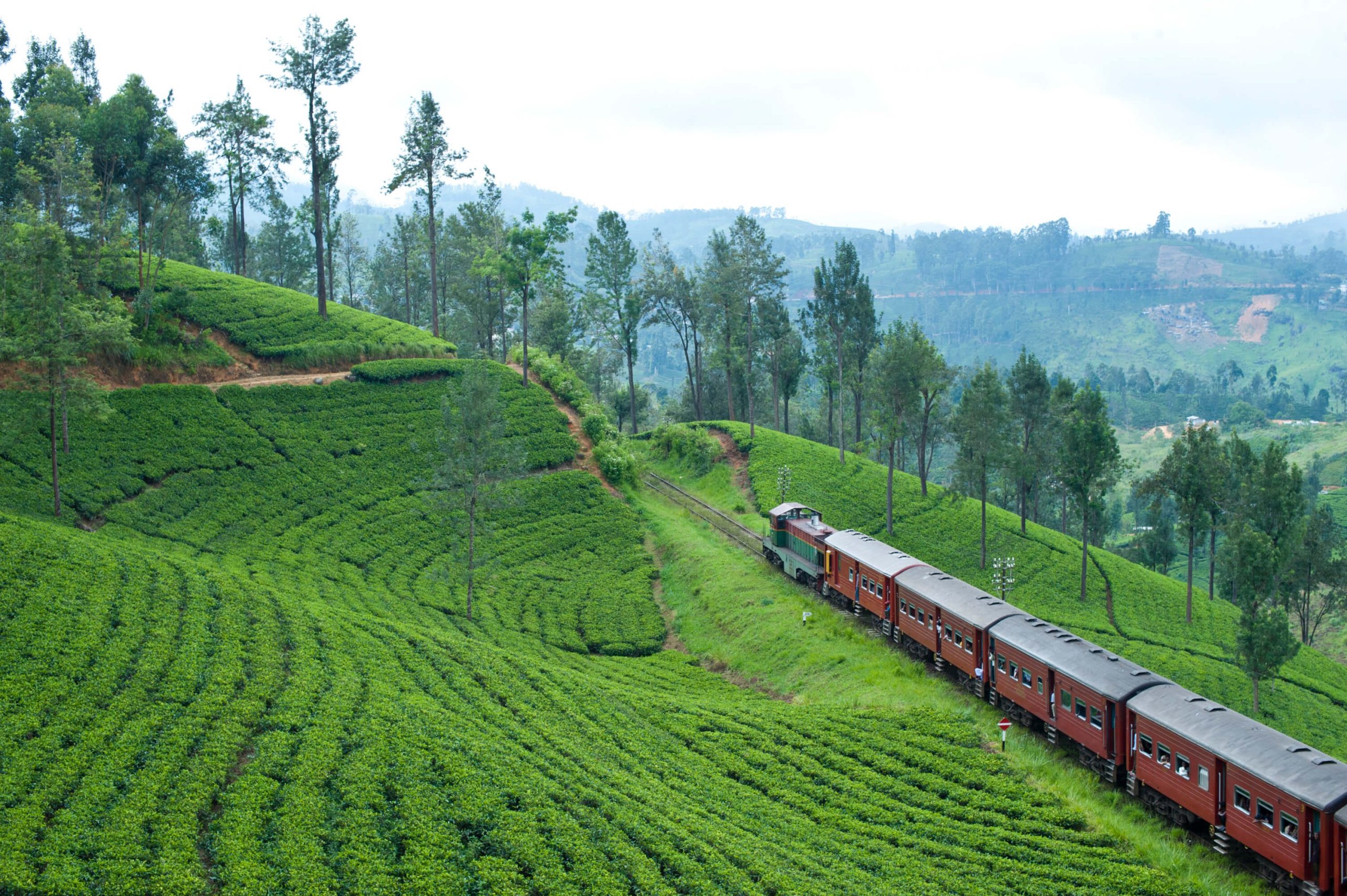- 14 July 2025
The History of Sri Lanka’s Railway System
The story of Sri Lanka’s railway system is inseparable from the island’s colonial past. It is a tale not only of engineering achievement, but also of economic transformation, resource extraction, and the enduring imprint of empire on landscape and society.
Origins: A Colonial Necessity
In the mid-19th century, transportation in Ceylon (as Sri Lanka was then known) was painfully slow and inefficient. The journey between Colombo and Kandy, just 115 kilometers, took nearly 12 days by bullock cart. This posed a major challenge to the British planters who had invested heavily in the island’s central highlands. By the 1840s, Ceylon had emerged as a promising plantation colony, with coffee becoming the chief export crop. However, the mountainous terrain and lack of reliable infrastructure made it difficult to move goods to the port in Colombo.
Amid increasing pressure from the colonial mercantile class, the idea of constructing a railway took root. In 1845, the Ceylon Railway Company was established in London, tasked with designing and constructing a railway that would primarily serve the export economy. Although there were lengthy delays and funding issues, construction finally began in 1858. By 1864, the first segment, 54 kilometers from Colombo to Ambepussa, was completed and became operational the following year on October 2, 1865.
The Coffee Crash and the Rise of Tea
The original intent of the railway was clear: to serve the plantations. The early lines were designed specifically to accelerate the movement of coffee from the hill country to Colombo’s harbour for export to European markets. However, the outbreak of coffee rust disease in 1871, caused by the fungus Hemileia vastatrix, devastated the industry. Within two decades, coffee cultivation had all but collapsed, compelling planters to turn to a more resilient crop: tea.
This shift marked a turning point not only in Sri Lanka’s agricultural economy but also in the evolution of its railway network. Recognizing the potential of tea as a profitable export commodity, the British intensified railway expansion into the central highlands, facilitating the transportation of both goods and labour. The Main Line, originally intended to connect Colombo with Kandy, continued to extend deeper into the hill country:
- Kandy (1867)
- Nawalapitiya (1874)
- Hatton (1884)
- Nanu Oya (1885)
- Bandarawela (1894)
- Badulla (1924)
This progression not only opened up previously inaccessible terrain but also laid the groundwork for the tea industry to flourish, making Ceylon tea a global commodity.

Expansion and Integration: A National Grid Emerges
By the early 20th century, the railways were no longer confined to the central highlands. Colonial authorities began expanding the network to serve other regions, integrating distant parts of the island into a unified economic system. Each line served a specific strategic or economic function:
- The Matale Line (1880) connected additional agricultural zones to the Main Line
- The Coast Line (1895) ran south from Colombo along the Indian Ocean, enabling movement of people and goods between the capital and southern cities
- The Northern Line (1905) stretched toward Jaffna and the Tamil-dominated northern peninsula, later extended to Kankesanthurai, reinforcing administrative control and trade
- The Mannar Line (1914) established a link to the ferry services to South India, strengthening transnational ties within the British Empire
- The Kelani Valley Line (1919) facilitated access to rubber and cinnamon plantations near Avissawella
- The Puttalam Line (1926) reached the arid coconut-growing northwestern region
- The Batticaloa and Trincomalee Lines (1928) finally integrated the Eastern Province, long isolated from the colonial centre
By the 1930s, Sri Lanka’s railways formed an extensive, efficient grid that served not only economic ends but also enhanced mobility for the island’s growing population. For the first time, people from rural areas could travel for work, education, and pilgrimage, particularly to sacred sites like Kataragama and Anuradhapura, with relative ease.
Engineering Feats and Human Labour
Building the railway system was no small feat. British engineers and surveyors confronted treacherous terrain, dense jungle, and extreme weather. The routes into the hill country demanded complex solutions including tunnels, viaducts, and bridges, many of which stand to this day as marvels of 19th-century engineering. The Nine Arches Bridge near Ella, constructed without steel during World War I, remains an iconic testament to this ingenuity.
Equally important, though often overlooked, was the role of human labour. Thousands of Sri Lankans, often underpaid and overworked, alongside Tamil indentured labourers brought from India, toiled to clear forests, lay tracks, and build stations. The railway was a colonial enterprise, and it was powered by the sweat and sacrifice of the colonized.
Post-Independence and Modern Legacy
After independence in 1948, the railway came under the control of Sri Lanka Railways, a government-run institution. While the network continued to serve the public, changing transport dynamics such as the rise of roads and private buses led to reduced investment in railway infrastructure. Nonetheless, the railway retained immense cultural and practical value.
In recent years, interest in rail travel has revived, spurred by tourism and renewed recognition of its environmental and social benefits. The scenic hill-country trains, winding through tea plantations and cloud forests, are now a beloved part of Sri Lanka’s travel experience, connecting visitors with a slower, more nostalgic rhythm of life.

Tracks Through Time
Sri Lanka’s railways were built to serve the empire, but they evolved into something much more enduring. They reshaped landscapes, connected people and regions, and helped forge a national identity. Today, the railway system stands as both a legacy of colonial ambition and a vital part of Sri Lanka’s living heritage. These tracks continue to carry stories, livelihoods, and dreams into the future.

Extended Stay Savings
Extend your stay for 6+ nights at Cape Weligama, save more and enjoy the holiday of a lifetime.
















